Personal Fall
Personal Fall
-
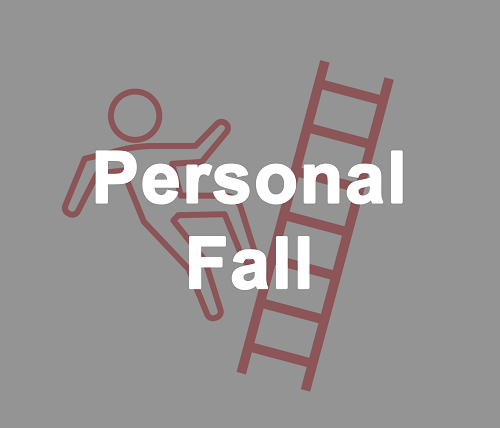
Many of us work in areas or on equipment that require the use of personal fall arrest (protection). A Personal Fall Arrest System is comprised of three (3) key components – anchorage point; body wear (harness); and connecting device(lanyard/snap hook). It is important to inspect your fall protection gear prior to every use per the manufactures requirements. Below are some things to look for when you are doing you pre-use Inspection
Harness and Lanyard Inspection
- Webbing - Grasp the webbing with your hands 6 inches to 8 inches apart. Bend the webbing in an inverted “U”. The surface tension resulting makes damaged fibers or cuts easier to detect. Follow this procedure the entire length of the webbing, inspecting both sides of each strap. Look for frayed edges, broken fibers, pulled stitches, cuts, burns and chemical damage.
- D-Rings/Back Pads - Check D-rings for distortion, cracks, breaks, and rough or sharp edges. The D-ring should pivot freely. Inspect for any unusual wear, frayed or cut fibers, or broken stitching of the D-ring attachments. Pads should also be inspected for cracks, excessive wear, or other signs of damage.
- Buckles - Inspect for any unusual wear, frayed or cut fibers, or broken stitching of the buckle attachments.
- Tongue Buckles/Grommets - Buckle tongues should be free of distortion in shape and motion. They should overlap the buckle frame and move freely back and forth in their socket. Roller should turn freely on frame. Check for distortion or sharp edges. Inspect for loose, distorted or broken grommets. Webbing should not have additional punched holes.
- Friction and Mating Buckles - Inspect the buckle for distortion. The outer bars and center bars must be straight. Pay special attention to corners and attachment points at the center bar.
- Quick Connect Buckles - Inspect the buckle for distortion. The outer bars and center bars must be straight. Make sure dual-tab release mechanism is free of debris and engages properly.
- Harness Fall Arrest Indicators - Inspect fall arrest indicators for signs of activation. Remove from service if broken or stretched.
- Lanyard Inspection - When inspecting lanyards, begin at one end and work to the opposite end. Slowly rotate the lanyard so that the entire circumference is checked. Spliced ends require particular attention.
- Snap Hooks - Inspect closely for hook and eye distortion, cracks, corrosion, or pitted surfaces. The keeper, or latch should seat into the nose without binding and should not be distorted or obstructed. The keeper spring should exert sufficient force to firmly close the keeper. Keeper rocks must provide the keeper from opening when the keeper closes. Closing/locking mechanism should move freely without sticking or jamming.
Basic care of all safety equipment will prolong the durable life of the unit and will contribute toward the performance of its vital safety function. Proper storage and maintenance after use are as important as cleansing the equipment of dirt, corrosives or contaminants. Storage areas should be clean, dry and free of exposure to fumes or corrosive elements.
ANSI and OSHA standards require that the user remove the equipment from service if it has been subject to the forces of arresting a fall. ANSI also states that "fall protection equipment shall be removed from service upon evidence of defects, damage or deterioration; once it has been subjected to impact loading; or upon expiration of the manufacturer’s specified service life, whichever comes first."
Contact Us
For more information about partnering with Raymond Storage Concepts and how we can satisfy your parts needs, please contact us today.
You May Also Like:
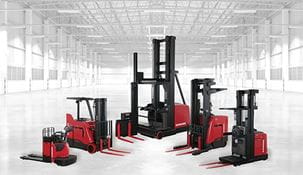
Raymond Forklifts
Raymond manufactures innovative electric lift trucks that deliver a lower total cost of ownership.
Learn More
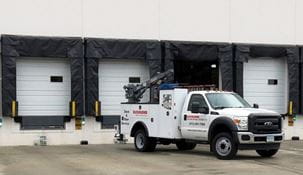
Dock & Door Equipment
Reduce energy consumption, increase worker productivity and safety with our loading docks and commercial doors.
Learn More
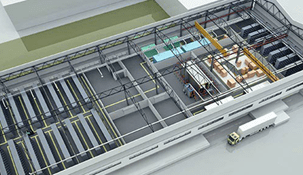
Engineered Solutions
After working with you to understand your specific needs, we evaluate potential solutions to determine which best meets your operational and financial requirements.
Learn More
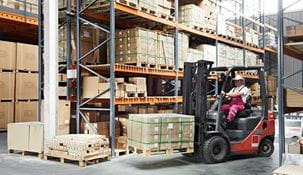
Fleet Maintenance Management Software | iTRACK | Raymond
Understand and manage fleet and asset maintenance data and costs with iTRACK.
Learn More


